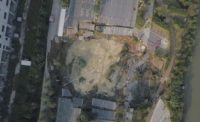China is implementing legal measures to hold business owners personally liable for hazardous conditions at worksites. The State Administration of Work Safety, which proposed amendments to existing law, said that, once the changes become operational, business owners also would face criminal prosecution.
The move follows 179 deaths in five major accidents over the past three months. The highly publicized events prompted a government move to force business owners and managers of state-owned enterprises to beef up worksite safety and supervision. Further, the government has indicated that it is ready to close down mines that are unable to ensure worker safety, despite repeated accidents.
The number of accidents and deaths due to worksite accidents is startling. At least 66,000 people died in 282,000 work-safety accidents across China in 2015, the work-safety administration said. In November alone, the country saw 4,804 work-safety incidents that led to the deaths of 3,479 people. The number of incidents and that of people killed were down by 4.5% and 6.3%, respectively, year-on-year, it said.
Many of these accidents result in deaths and injuries to a small number of people and attract little attention by the largely government-controlled media. But a series of recent accidents that, on each occasion, killed dozens of people has given a wake-up call to the authorities. "Previously, the authorities were only focusing on the actual damage," Yu An, vice president of the China Administrative Law Society and a professor at Tsinghua University, told the local media. "Given that certain actions are capable of resulting in major harm to the public interest, criminal charges are appropriate."
Accidents Galore
The latest accident took place in Shanghai's Putuo district on Dec. 18, when four people were killed. The men were arranging steel panels at a store when the plates tilted over onto them. The police said they may have suffocated, as they were stuck under the panels for a long time. Store workers told local media that each panel weighed 50 kilograms; the workers were struck by a full shelf of panels, which would have weighed more than four tons. There were no reports of any equipment being used for handling the panels.
That incident followed a major collapse of an unfinished cooling tower and scaffolding at a power plant in Jiangxi province that killed 74 people last November. Police investigators said the steel-and-concrete structures collapsed onto a row of workers' hostels due to a heavy avalanche. At least 86 miners were killed in recent incidents in Chongqing, Heilongjiang province, and the Inner Mongolia autonomous region. In September, 18 workers lost their lives in a coal-mine explosion in China's Ningxia Hui Autonomous Region.
Corruption Kills
China's frequent construction-industry accidents may be at least partly attributed to the prevalence of unlicensed mines, inadequate construction-site supervision, and contractors' and site owners' refusal to invest in safety infrastructure and automation due to the lower cost of labor. These practices are made possible because it costs much less to grease officials' palms than to put up the necessary facilities, sources said.
Yang Dongliang, the former head of the State Administration of Work Safety, now is facing a trial in a Beijing court for bribe taking and embezzlement of public funds. The prosecution alleges that Yang took $4 million in bribes when he worked as vice mayor of Tianjin city.
Chinese President Xi Jinping recently said that no effort should be spared to prevent accidents and that "development should not come at the cost of safety." Regulators should focus on containing and preventing major accidents, seek comprehensive solutions to resolve problems and eliminate the root causes in the work-safety sector, Xi said.
Experts say it may not be enough to make new laws and tighten official supervision. "To me, safety management is all about whether safety technologies are in place. It is important to identify all the sources of risks and monitor them in real time," Ling Wen, a Chinese Academy of Engineering professor, told the local media. For example, coal mines can be made safer by monitoring gas density in real time and establishing an alarm system to evacuate miners before the density reaches dangerous levels. "We need all workers to realize where the risks lie and how to avoid or fix them before going into the shaft," he said.



